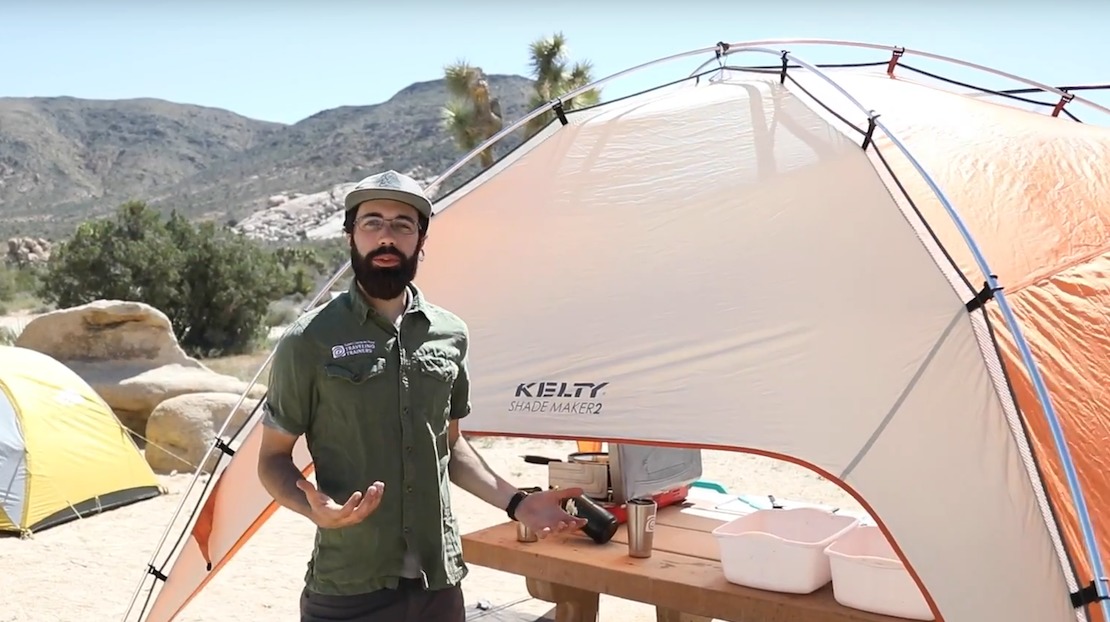Skills & Techniques
Leave No Trace Skills: Frontcountry Kitchen Setup


Joshua Tree, CA: Who loves camping? At Leave No Trace we love camping, so much so that between all four teams of Subaru/Leave No trace Traveling Trainers, we spend over 1000 nights a year under the stars! With all of this camping experience, we have picked up some useful tricks to create the ultimate frontcountry kitchen setup. Read on to see how we Leave No Trace while camping all year long.
Use a Tarp or Pop-Up Shade to beat the heat or those rainy days. We keep ours in the car at all times for those, “just in case” scenarios. We try not to let rainy days beat us down and keep our kitchen rain free with this handy pop-up.
A Scrim Cloth is essential for a Leave No Trace kitchen. Once laid flat on the ground beneath your cooking surface, scrim cloth will catch the food particles that fall from the table. Dirt slips right through the screen, so when it comes time for cleanup you’re only throwing out those dirty pieces of food. Leaving food scraps behind cause wildlife to be attracted to the campsite, scrim cloth helps to prevent this from happening.
The Four-Bin Dish Wash System is the ideal way to conserve water while preventing food particles from falling to the ground while dish washing. Using this system is great for groups or families and does a wonderful job in cleaning dishes thoroughly. Check out this link to watch a video with directions in setting up your own four-bin dish wash system.
Use Proper Food Storage to prevent food conditioning in the local wildlife. A fed animal is a dead animal, which is why we always observe the local rules and regulations. We use bear lockers whenever provided. When there is no bear locker storing food in a locked vehicle is a great choice. If you love cool gear consider a cooler that is certified as bear-resistant. Locking a certified cooler makes them bear resistant and will keep out other animals like raccoons.
Keep Clear of Water Sources when camping in dispersed areas. This will allow wildlife in the area to access water sources. This vital resource is essential for wildlife and camping at least two hundred feet away from the water will allow animals to access source, stress free.
Never Burn Trash or Food; campfires do not get hot enough to completely incinerate these items. Burning trash releases harmful carcinogens into the atmosphere and around camp. If food is left behind in a campfire ring wildlife will likely sniff it out and may continue to frequent campsites.
Enjoy your world & Leave No Trace,
Steph & Andy
Subaru/Leave No Trace Traveling Trainer Team East
Leave No Trace’s Steph Whatton and Andy Mossey are part of the 2017 Subaru/Leave No Trace Traveling Trainer Program that provides free, mobile education to communities across the country. Proud partners of this program include Subaru of America, REI, Fjall Raven, ENO, Deuter, Thule, and SmartWool.
Related Blog Posts
Let’s protect and enjoy our natural world together
Get the latest in Leave No Trace eNews in your inbox so you can stay informed and involved.

